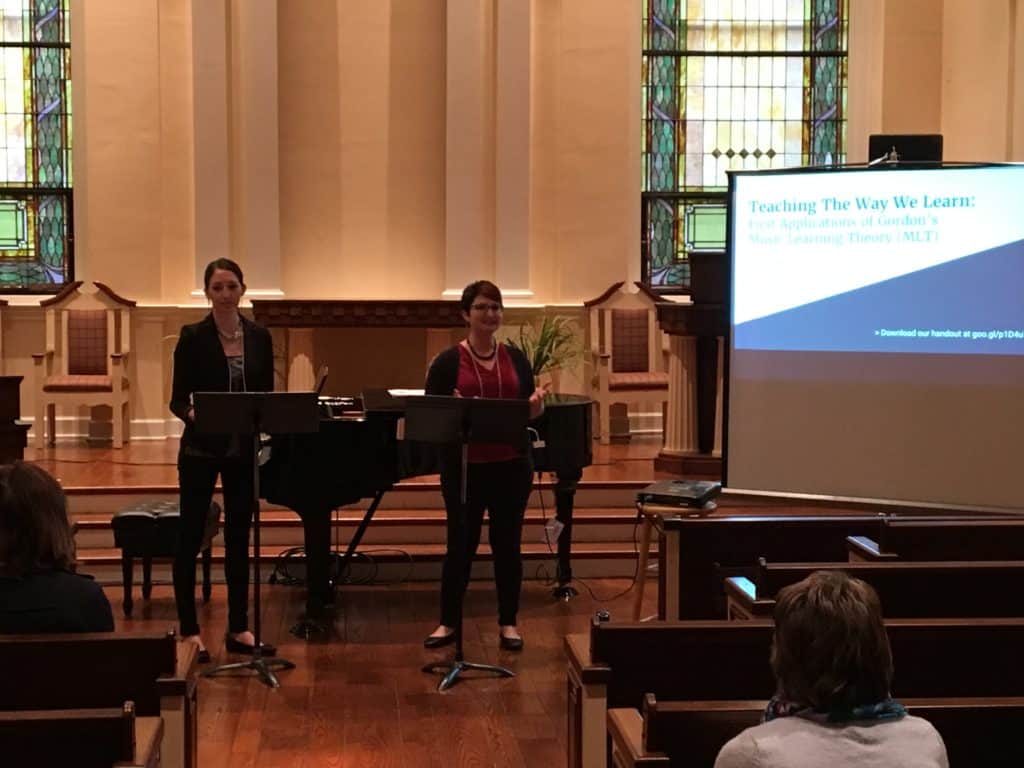Are you interested in music education?
If so, you may consider adding Discovering Music from the Inside Out: An Autobiography by Edwin E. Gordon to your reading list.
In this review, I’ll briefly share why I love this book, a few key quotes, and some fun and interesting facts.
In this autobiography, Dr. Gordon (1927-2015) shares his journey as a musician, music educator, and researcher. Through these experiences and influences, he began to question how music is conventionally taught, ultimately leading him to become the “founding father” of Music Learning Theory (MLT).
If you’re looking to learn more about Music Learning Theory, then this book should be one of the first books you grab. Hearing Dr. Gordon talk about his own experiences and thought-process that brought him to research more deeply how we learn music is a lovely soft primer into what can often feel like the “daunting” world of MLT.
That being said, I strongly believe that you don’t have to be interested in MLT or even necessarily enjoy autobiographies for this book to be a really good choice.
Anyone who is simply a curious music educator will find his journey inspiring, thought-provoking, and even relatable.
I found it to be quite a delightful read and loved that it was an easily consumable 130 pages.
Key Quote
Teaching is from the outside, whereas learning is from the inside. (Page 102)
Other Notable Quotes
You must always be hearing where the piece will end, the tonic, as you are performing, no matter what note you are playing. That is the way you play in tune. The most important part of music takes place between beats not on beats. (Page 38)
Even today, more than forty years later, I believe a myriad of music teachers may still be uncomfortable with music learning theory. To accept its concepts requires time and change, and most teachers, and humans in general, do not embrace change easily. Specifically, to shift emphasis in music education from promoting the teaching process to understanding the learning process requires courage and risk. Good methodology must be based on principles of learning. I believe the foremost egregious problem in current music education practice is most teachers teach the way they themselves were taught and how they were taught to teach, not in accord with how students learn. Unfortunately, many thing teaching and learning are synonymous. (Page 57)
Does not the understanding of music have enough substance in its own right to be taught for its own sake? (Page 111)
A Few Fun and Interesting Facts
- Dr. Gordon’s name “Edwin Elias” was actually mixed-up on his birth certificate. It was supposed to be Elias Edwin. Unfortunately (he says), Edwin stuck and thus, in his professional career, he always asked for his middle initial to be included in his name.
- In order to direct him onto the “straight” path and away from questionable activities, Edwin’s father bought him a string bass.
- During WWII he became a member of the 302nd Army Band. Since they didn’t have a place for string players, he learned to play tuba.
- He attended Eastman School of music and, of the applied teachers there, he said, they “seemed not to know two instruments must be reckoned with, the actual instrument and the audiation instrument.” (Page 21). It was at this time he became conscious of the necessity for audiation (without yet having a term for it).
- He left Eastman for a stint at which time he joined the Gene Krupa band, an experience that began to build the foundation of his musical philosophy/journey.
- Eventually returning to Eastman, he earned a bachelor’s in string bass performance and a master’s in bass performance and music literature.
- He obtained a second master’s degree in professional education for Ohio University in Athens, Ohio.
- After one year of public school teaching, he took a fellowship at the University of Iowa in Iowa City where he would spend the next 16 years of his life.
- He was offered administrative duties at the university level but he turned them down as he didn’t want to be tied down by administrative duties and prevented from doing research.
- He used the term “audiation” for the first time during a lecture in 1974.
- He was inducted into the MENC Hall of Fame in 1996
You can also visit the GIML Website (Gordon Institute for Music Learning) to read more about Dr. Gordon.

The series includes 20 dances set to Classical works from Brahms’s “Waltz in A-flat” to Prokofiev’s “Romeo and Juliet.” The movements reflect both the form and expressive quality of the music. They’re really fun, and my kids have always enjoyed them.






